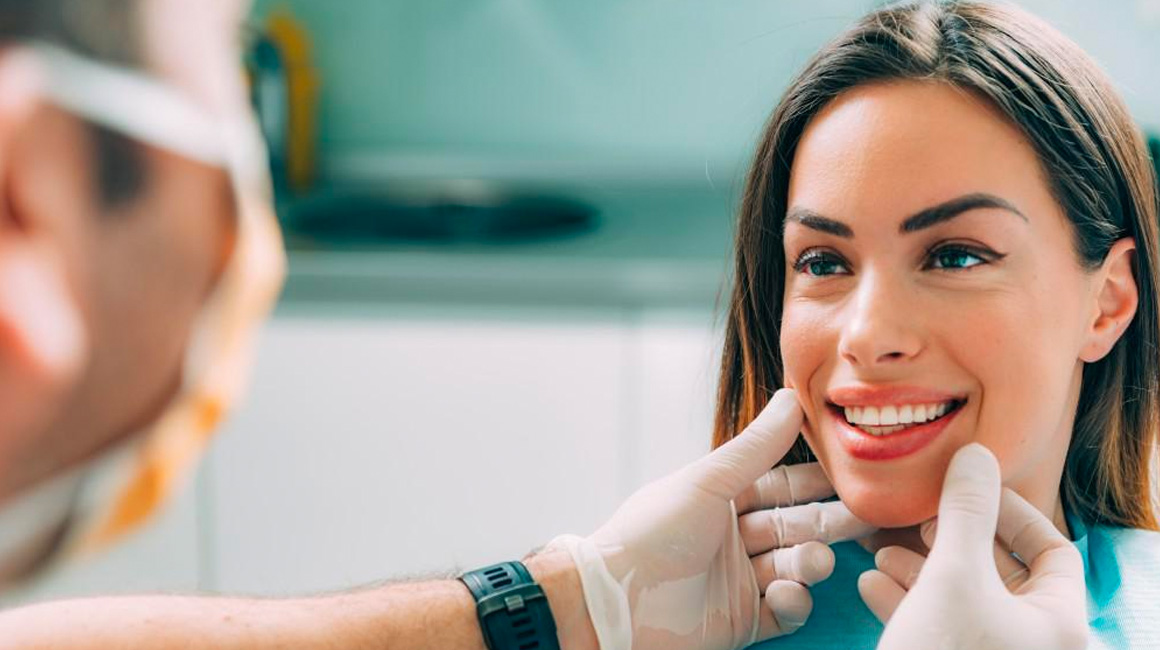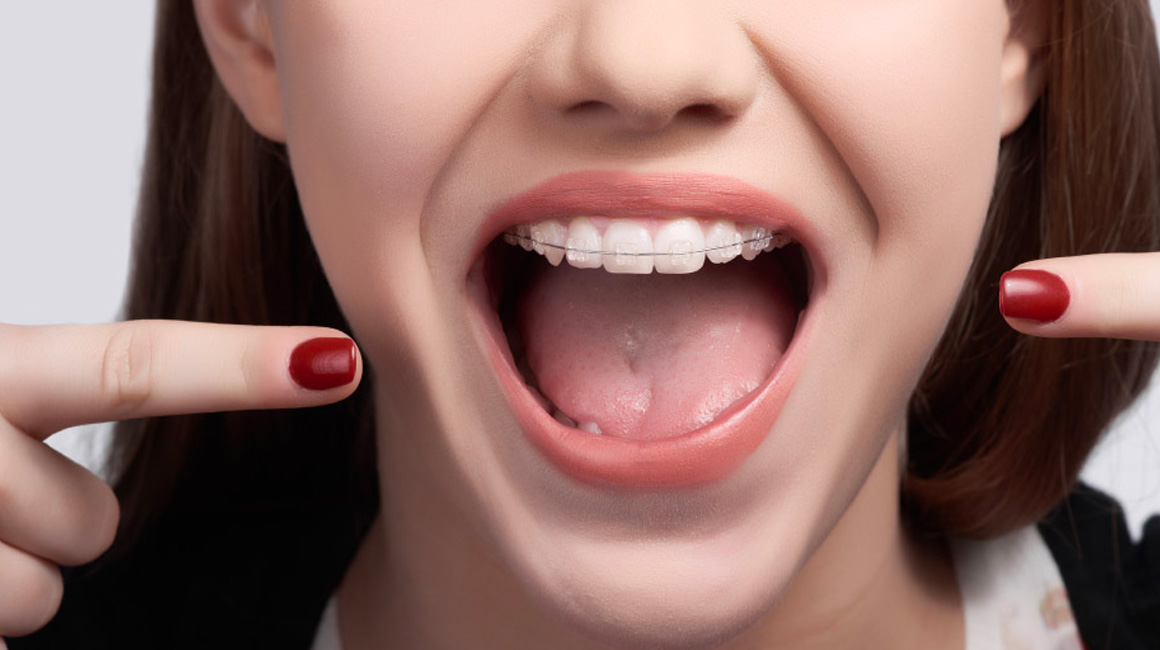Orthodontic treatment has become increasingly popular among adults, as they want to not only straighten their teeth but also improve their oral hygiene and function.
Many patients, especially adults often have dental needs that may require restorative care, treatment or management of the periodontium (gums and supporting structures) and enhancing aesthetics in conjunction with braces. In such situations achieving an optimal aesthetic and functional result requires the expertise of more than one clinician. In these cases we elect for a collaborative approach that involves the general dentist and other specialists to develop a unified treatment plan to achieve the best possible result. This multidisciplinary approach to treatment is extremely effective for such complex cases where one specialist alone cannot deal with all aspects of the problem.
Dr. Egger has provided advanced multidisciplinary dental care for her patients over the past 30 years and regularly lectures on the subject of multidisciplinary care to orthodontic residents, oral surgery residents, periodontal residents, and dentists. She has established a multidisciplinary team composed of some of the leading specialist’s in their fields. This collaborative approach ensures that as a patient you receive the best possible care at every step of the treatment process. The team approach allows for more efficiency with a better, more stable and lasting treatment outcome.
At your complimentary initial consultation, our doctor’s time will be reserved for you to discuss your needs and determine the best options for the fastest, most comfortable and aesthetically pleasing way to go about straightening your teeth. With convenient hours and minimum wait times in our Issaquah orthodontic office, you can fit treatment into your busy schedule.
Pre-Restorative Orthodontics
Pre-restorative orthodontic care involves close coordination with your general dentist and periodontist or oral surgeon to treat conditions where teeth need to be moved in order to achieve a better overall outcome for crowns, bridges, implants, etc. After teeth have been straightened, restorations can be customized and placed. If your overall restorative treatment plan includes implants or replacement of multiple teeth, Dr. Egger will ensure that your teeth are in the right positions to achieve the best long-term functional and aesthetic outcome.
Surgical Orthodontics
Surgical orthodontics, also known as orthognathic surgery, is a type of orthodontic treatment used to correct severe cases that include bad bites, jawbone abnormalities, and malocclusion.
Oral and maxillofacial surgery is one of the nine recognized dental specialties, and it focuses on treating complex craniofacial cases that involve the mouth, jaw, face, and skull. It is especially important to receive the treatment you need if these abnormalities are causing difficulties in speaking, chewing, eating, sleeping, and other routine activities. In addition to making these activities easier and more comfortable, jaw surgery can help to improve your oral appearance and even the appearance of your overall facial profile.
Dr. Nadine Egger uses computerized treatment planning which minimizes treatment times, recovery periods and improves the effectiveness of surgery. These advances in technology, procedures, and equipment reduce post-surgical recovery time, thus allowing patients to return to their normal routines soon after the surgery. At Egger Orthodontics, we use the latest in technology, techniques, and materials to ensure that you achieve the best possible results. You can rest assured that our team will support you throughout the process and provide you with a comfortable, positive experience.
TMJ/TMD
The temporomandibular joint, more commonly referred to as the TMJ or jaw joint, helps in the basic opening and closing movements of the jaw. Unfortunately, this joint is a common area for recurring pain. Our temporomandibular joints and jaw muscles are involved in making chewing, speaking, swallowing, making facial expressions and even breathing happen! Located on either side of our heads, they make opening and closing your mouth a motion that you can actually accomplish.
When this complex system of muscles, ligaments, discs, and bones encounters an obstacle that keeps it from functioning the way it is meant to, this can lead to pain and discomfort in the form of a disorder of the TMJ, or a temporomandibular disorder, TMD. The pain associated with this is usually described as a dull, aching pain that comes and goes in the jaw joint and surrounding areas.
One of the best treatments for TMD is orthodontic treatment. TMD is often caused by issues with your bite. Correcting the bite through alignment of the teeth, not only next to each other, but across the jaws will need to be addressed. Jaw clenching and teeth grinding, or bruxism, are two of the most common issues that can be solved by braces or Invisalign because they are designed to help move the teeth into more ideal alignment.
BOTOX® & TMJ Pain
TMJ disorder, teeth grinding and clenching can all cause a disruption to daily life and result in extreme pain. Fortunately there is a treatment that will relax the muscles that control the jaw (temporomandibular) joint. This treatment is known as BOTOX Dental Therapeutic. Traditional treatments such as night guards and dental splints were used in the past to treat these conditions. However, BOTOX Dental Therapeutic injections deliver targeted treatment to the source of the problem.
Long before BOTOX injections were used to treat facial aesthetics, they were used for medical purposes. This would include anything from facial tics, involuntary muscle movement, migraine headaches, and many more.
BOTOX is one of the most studied medical products on the market. These extensive research studies have shown BOTOX to be extremely safe. The effects of the initial injection lasts 3-4 months. BOTOX relaxes the muscles in which it is injected. As the muscles relax the individual is unable to continue grinding or squinting depending on which area was injected. Studies have shown that after 3 or 4 injections over a period of time, the individual muscle is actually retrained.
Sleep Apnea
We have a greater understanding of sleep apnea and the airway today. Many sleep and airway-related issues stem from underlying discrepancies in the jaws. When the jaws fail to grow forward enough, the airway behind the tongue is compromised. For some people, the airway closes off during sleep due to the weight of the tongue, palate, and lower jaw. The result is a temporary stoppage of breathing (an “apnea”), and it’s called Obstructive Sleep Apnea (OSA), the most common of the sleep breathing disorders. If we can get the jaws in the right place, we can open up the airway – helping patients breathe better, sleep better, and experience a greater quality of life. We incorporate both dental and skeletal expansion in our treatment plans. We work closely with Sleep Medicine Physicians, ENTs and Oral Surgeons. When appropriate, we set up patients for orthognathic surgery to provide a more permanent solution to their airway and sleep problem.
Accelerated Orthodontics in Issaquah, WA
Egger Orthodontics is proud to offer accelerated orthodontics treatments with Propel orthodontics to patients who are looking for an effective way to accelerate their orthodontic treatment in Issaquah. Propel devices work for most of our patients and are compatible with traditional metal braces, clear braces, and clear aligner systems like Invisalign in Issaquah. Propel procedures are non-invasive and have no recovery time, resulting in bite correction that is faster, more effective, and often more comfortable than orthodontic treatment alone.
Propel Excellerator
Performed in our office, this chairside device works by stimulating the bone around your teeth, helping the teeth to move faster and more predictably to their ideal locations. By causing what we call “micro-osteoperforations,” Propel Excellerator creates a localized inflammatory response that includes increased blood flow and cytokine expression.
With a focus on increasing blood flow and cytokines in the areas of the mouth where you want to see movement, the bone remodeling activity also increases, which in turn moves the teeth at a faster pace. Put more plainly, this helps to shift your teeth and heal the surrounding tissues faster than they would with just braces or aligners.
Propel VPro5
An at-home treatment, this removable appliance is worn in the mouth for a short period of time daily and delivers gentle pulsating forces we call “micro-pulses” to the teeth. These micro-pulses encourage bone growth and cellular turnover in the remodeling process, increasing the speed at which a tooth moves and responds to the forces being applied.
Periodontally Accelerated Osteogenic Orthodontics (PAOO)
A straight smile doesn’t have to take years to achieve! PAOO, also known as Periodontically Accelerated Osteogenic Orthodontics, is a periodontal treatment that drastically shortens orthodontic treatments – in fact, the process is so dramatically increased, the orthodontic treatments can be completed 3-4 times faster than with braces alone! Egger Orthodontics is pleased to offer this advanced dental technology to qualifying patients in our Issaquah office.
PAOO works by accelerating the orthodontic procedure – it softens the existing bone in order to move teeth faster with the help of braces. Bone and gum tissue are stimulated to rapidly and safely move teeth into their desired position. This means that the bone surrounding the teeth is softened using well-established periodontal techniques. The new softened bone increases movement towards the desired location determined by the doctor. Once movement is complete, the bone regenerates to create a stable structural support.
The softened bone is crucial to a speedy orthodontic treatment, but the grafting material also converts into strong bone, which supports the straightened teeth and establishes a long-lasting, corrective solution for teeth that are misaligned and crooked. Patients not only enjoy speedy results but also a more comfortable procedure than traditional orthodontic treatments.
Dr. Egger is one of the only orthodontists in the Issaquah area to use these exciting new techniques. Dr. Egger will work closely with your periodontist to achieve the desired outcome for each patient. Treatments are customized on a case-by-case basis, but the repositioning of teeth takes place rapidly. Patients can expect to come in for adjustments every two weeks throughout the process.
Issaquah Adult treatment options include Invisalign, metal braces, and clear braces in Issaquah, WA. We look forward to sharing with you how we can make a difference in your smile for a lifetime.
Frequently Asked Questions
What is multidisciplinary orthodontics?
Multidisciplinary orthodontics refers to the work we do as orthodontists in conjunction with the expertise of other specialists or in anticipation of other treatments that will greatly benefit from proper dental alignment.
What are some examples of specialists involved in multidisciplinary orthodontics?
Along with Dr. Egger, you will find that there is work to be done with oral and maxillofacial surgeons, periodontists, cosmetic dentists, and more. Multidisciplinary orthodontics works in stages to ensure you’ll get the best care possible.
When is multidisciplinary orthodontics recommended?
Multidisciplinary orthodontics is especially useful for patients who wish to undergo dental realignment but also have periodontal issues, such as periodontitis. Please make sure to talk to your orthodontist to ensure if you need multidisciplinary work.
How does multidisciplinary orthodontics benefit patients?
Multidisciplinary orthodontics is especially beneficial because it can help improve your dental aesthetics, restore proper function, and improve long-term health.
What is the role of the orthodontist in multidisciplinary orthodontics?
We make sure your dental alignment is efficiently achieved while you move in preparation for some additional work. Please keep in mind that your orthodontic treatment may take place before or after another specialized treatment, which is why you should consult with an orthodontist first.








